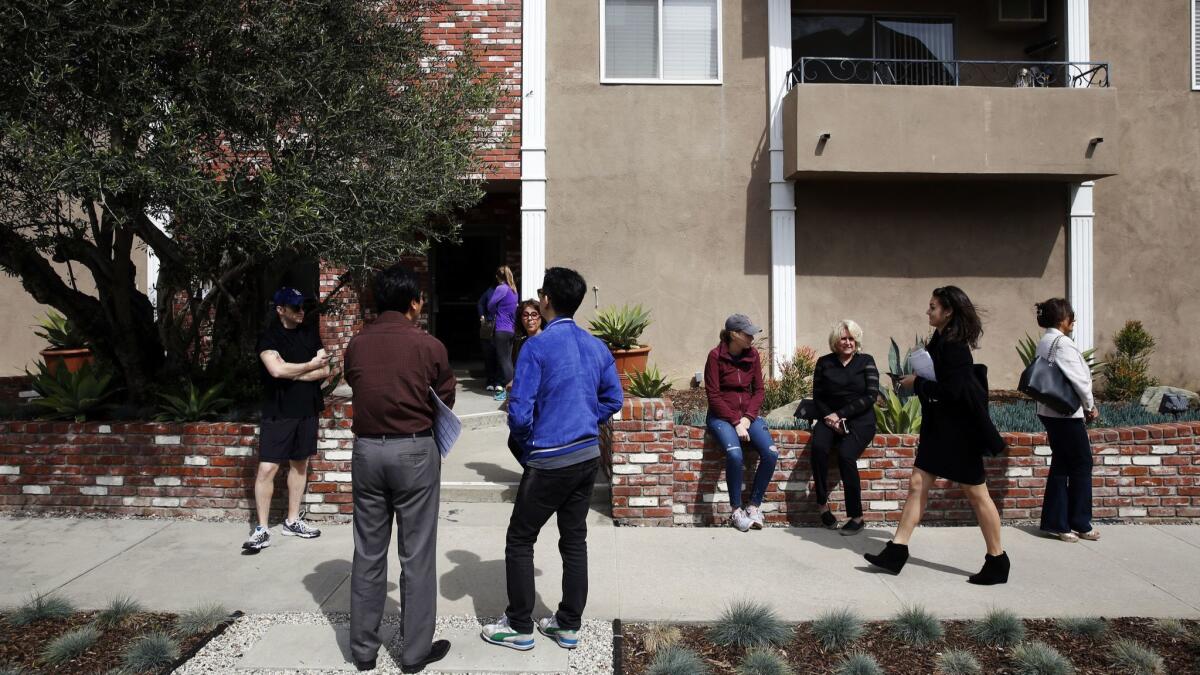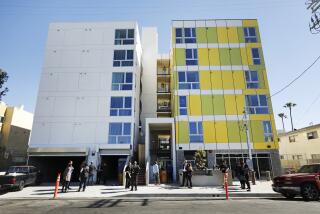Editorial: California puts off dealing with its housing crisis for another year

Well, it looks like 2019 wonât be the state Legislatureâs âYear of Housingâ after all.
For months, it seemed like California lawmakers were warming to the idea of sweeping legislation to make it easier to build badly needed housing. The boldest proposal on the table, by Sen. Scott Wiener (D-San Francisco), called for the state to override local zoning laws to allow mid-rise apartment buildings to be constructed within half a mile of major transit stops or in âjobs-richâ areas, even in single-family neighborhoods that lawmakers havenât dared to disturb.
The bill also would allow property owners to convert single-family houses into four-unit apartment buildings anywhere in the state.
But on Thursday, a Senate committee put SB 50 on hold without explanation. The bill isnât dead â it could be considered again in 2020. Still, the decision by legislative leaders to put the proposal on ice, rather than keeping it going for more negotiation this session, was a surprise and a disappointment.
The state has to increase housing production, even if it means overriding local control in certain locations.
We like the idea behind SB 50, which is to boost housing construction near transit and job centers so people can get around without driving. The goals are well-nigh inarguable: increasing the supply of housing, easing traffic congestion and cutting the vehicle emissions that are polluting the air and fueling global climate change.
The proposal has some real shortcomings, however, and we wanted it to be amended to give cities a final chance to accommodate more housing before the billâs overrides kick in. Itâs generally preferable to have the state set housing targets and let local officials â who are closest to the people most affected by land-use decisions â figure out how to meet those targets.
Postponing the bill to 2020 certainly gives lawmakers plenty of time â more than they need â to develop a model that sets ambitious and equitable housing goals, then gives cities a limited amount of time to zone their land to meet those goals. If cities fail to act, their ability to block denser housing development near transit centers should be preempted by SB 50.
But the postponement should be just that: a delay, not a denial. Itâs clear that the state has to increase housing production, even if it means overriding local control in certain locations.
California is in the middle of a housing crisis that is exacerbating poverty and homelessness and driving people out of the state. Many communities, particularly those in urban coastal cities, have steadily put up obstacles to housing construction, leaving the state unable to meet the needs of its growing population. California must build 180,000 units of housing each year just to keep up with demand, but it has averaged only 80,000 a year over the last decade.
Even opponents of SB 50 professed to support the goal of building more housing near transit and jobs. Much of the angst has come from communities worried that the bill would destroy single-family neighborhoods. But the fact is, California canât build enough housing if single-family zoning â which makes up nearly 80% of the stateâs residential land â remains sacrosanct.
Enter the Fray: First takes on the news of the minute Âť
Banning multi-family development in vast swaths of the state limits the number of homes that can be built, excludes would-be-residents from living near good schools or workplaces, and perpetuates racial and economic segregation. Lawmakers at the local and state level have to allow more apartments, townhouses and condos in more neighborhoods.
Gov. Gavin Newsom, who had not taken a public position on SB 50, said Thursday that he was âdisappointedâ by the Senateâs decision to hold the bill. Thereâs still time for the governor to help shape the next round of negotiations on SB 50.
Itâs also time for Southern California lawmakers to take on a more visible role in shaping and advocating for housing reforms. So far, Wiener and other Bay Area legislators have carried the most ambitious housing bills. City and state leaders from Southern California canât sit on the sidelines and complain about one-size-fits-all solutions. Theyâve got to come up with meaningful reforms that cut through the NIMBY gridlock.
Newsom had also said he was looking at SB 50 as one piece of larger housing package that would include tenant protection bills. Californiaâs homeless crisis continues to worsen as more and more renters are priced out of their homes. The decision to postpone SB 50 cannot and should not delay vital proposals to expand rent control and require landlords to have just cause to evict tenants.
Follow the Opinion section on Twitter @latimesopinion and Facebook
More to Read
A cure for the common opinion
Get thought-provoking perspectives with our weekly newsletter.
You may occasionally receive promotional content from the Los Angeles Times.










